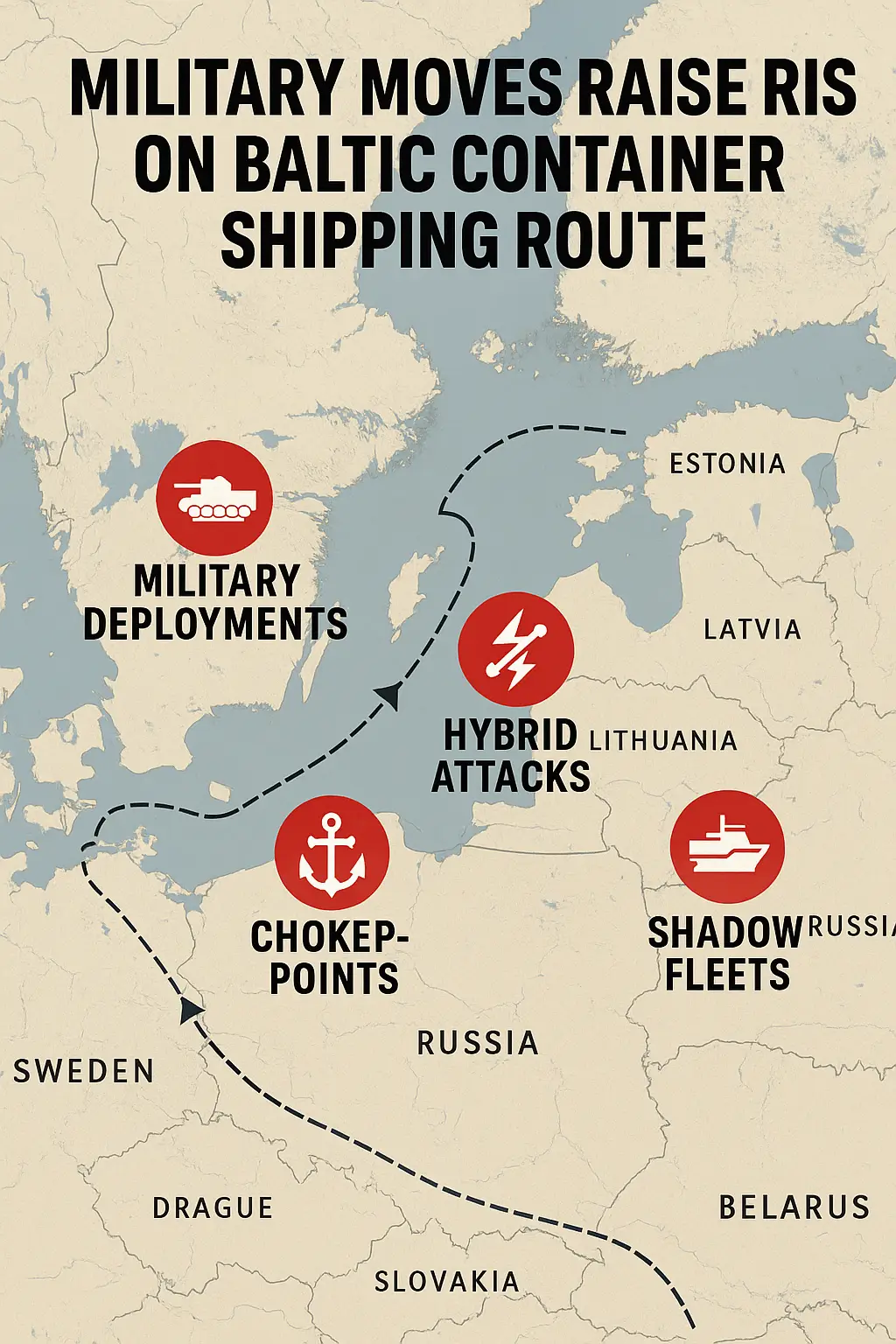When geopolitics meets containers: the Baltic Sea’s shipping arteries are under increasing strain
With recent military deployments—especially around Gotland—and growing hybrid warfare tactics, the Baltic Sea has become far more volatile. Once considered a relatively stable maritime route linking Northern Europe, it’s now fraught with strategic risks that could disrupt container flows and raise insurance and security costs. (based on Container News, 25 Sep 2025)
How the Baltic Route Got Riskier
1. Military Deployments on Strategic Islands
Sweden’s Gotland island, centrally located in the Baltic, has seen elevated troop presence and surveillance infrastructure. This places naval and aerial assets close to major shipping lanes, increasing the chance of misunderstandings or interference.
2. Hybrid Warfare & Infrastructure Sabotage
Beyond overt military moves, we’re seeing stealthier, ambiguous actions—undersea cable tampering, anchor drags, and GPS jamming. These methods blur the line between sabotage and accident, creating pervasive uncertainty for merchant vessels.
3. Shadow Fleets & Regulatory Evasion
“Shadow fleets”—vessels with opaque ownership, weak regulation, or flag irregularities—are active in the region. Their unpredictable behaviour (turning off AIS, loitering near strategic infrastructure) raises suspicion and risk for legitimate shipping.
4. Naval Claims & Territorial Posturing
Russia has openly stated it will defend its vessels in the Baltic Sea. Such posturing signals that even commercial ships could become pawns in naval brinkmanship.
Impacts on Container Shipping
- Route Avoidance & Diversions
Shipping lines may detour around the Baltic or reduce frequency if perceived risk becomes unacceptable. That pushes transit times up and costs worse. - Insurance Premiums & Underwriting Limits
Higher security risk leads underwriters to raise war-risk premiums or even refuse cover for some routes. That extra cost gets passed down the chain. - Logistic Planning Challenges
Unpredictability means buffer times, alternative ports, and redundancy strategies become essential rather than optional. - Chokepoint Vulnerability
The Baltic includes narrow straits, shallow areas, and chokepoints—making them natural flashpoints if military presence or infrastructure damage occurs.









